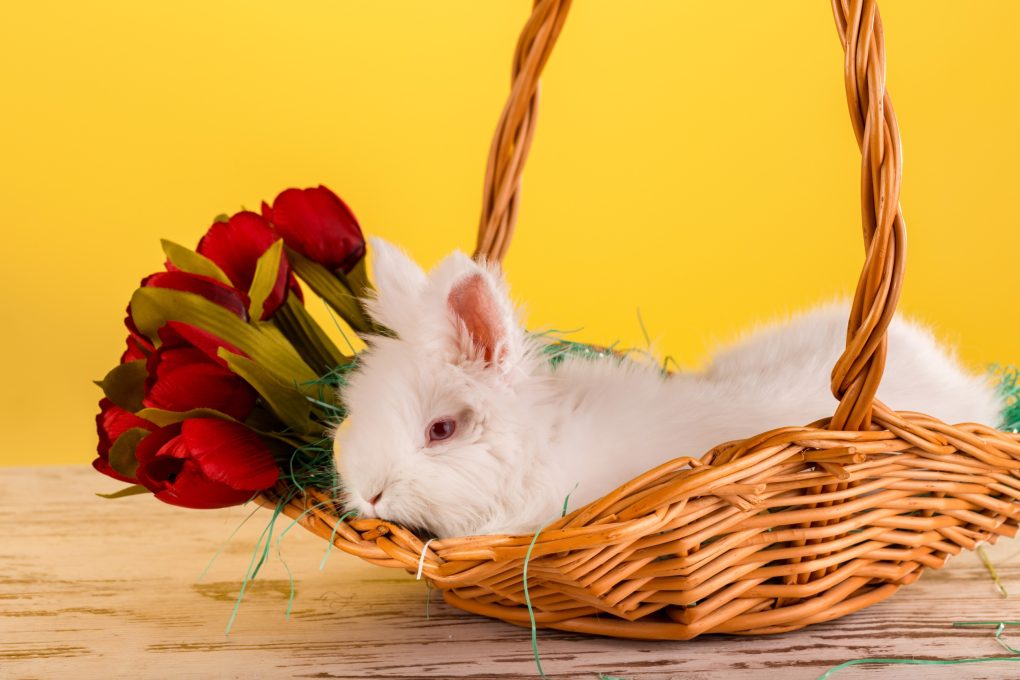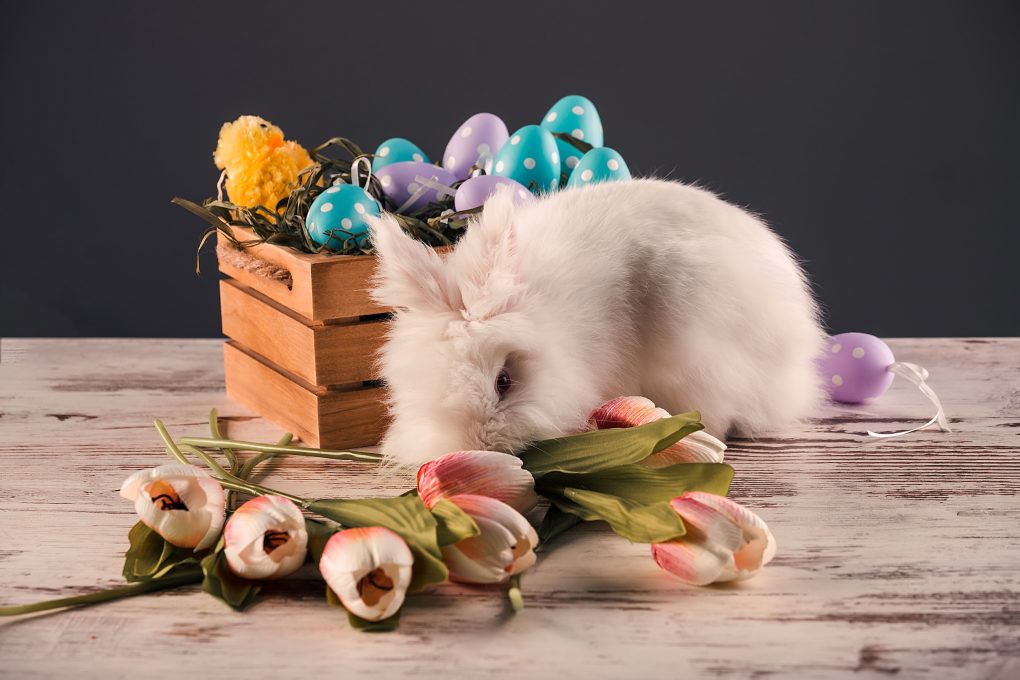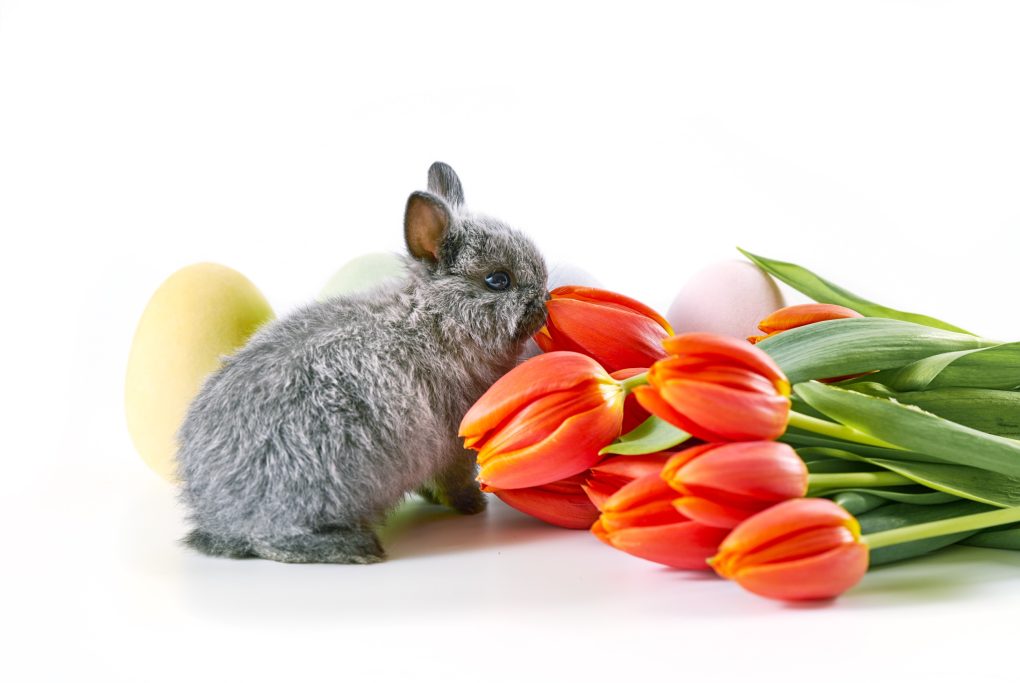Do Rabbits Eat Tulip Bulbs? Ways to Protect Tulips From Rabbits
Rabbits can be a nuisance when it comes to tulips. These tiny flowers are vulnerable to critters. Rabbits, squirrels, and even deer can all cause damage to tulip bulbs. That’s why it’s important to protect tulip bulbs from critters. This will ensure that your tulip garden is left undamaged. In this blog, we’ll tell you how to protect tulip bulbs from critters and what repellents you can make at home to repel them.

Table of Contents
10 Ways to Protect Tulips From Rabbits
Fencing Tips to Protect Tulips from Critters
Protecting tulips from critters can be tricky. Rabbits are known for chewing through fencing, and burrowing animals such as deer can quickly destroy a garden. To prevent these issues, ensure fencing is at least 3 feet high to protect from bunnies and 6 feet high for deer. Metal mesh is the preferred fencing material, as rabbits can chew through plastic and fiberglass. Such materials are cost-effective and durable, making them an effective physical barrier to protect your tulips. Besides, adding gritter material to the soil around your tulips can discourage digging. This way, you can protect your investment without constantly replacing the fence.
Odor and Taste Repellants
Various repellents are available for rabbits, including commercial products, which use an odor or taste that rabbits dislike. Some homemade concoctions, such as garlic, hot pepper, vinegar, and onions, may also provide repellant effects. Garden centers sell a variety of brands using nasty odors or scents of predators to repel rabbits. These include repellent sprays and powders made with predator scents, such as Eucalyptus radiata oil and capsaicin, and electronic repellent devices that use loud sounds or flashing lights to scare off rabbits. Various combinations of motion, scent, taste, and barrier repellents help to deter rabbits from gardens and farms. Keeping the area around your garden or farm free of rabbit urine and droppings helps to deter them from visiting the site.
Human Hair Cuttings
Human hair cuttings can be used as repellants against rabbits. Hair cuttings from humans or pets can be scattered around plants to create an unpleasant scent. Alternatively, human hair can be used to make rope traps baited with a favorite treat and catch rabbits by the leg. Commercial repellents can also be applied on or around flowering bulbs to keep rabbits away. Other repellent options include hot pepper wax, made using hot peppers, and hot-pepper-based sprays. Some gardeners swear by making repellent concoctions of garlic, hot pepper, vinegar, and onion. These various repellent methods work well for different types of gardens and climates.
Human Urine
Human urine can be used as a repellent for rabbits due to its strong odor and taste. Many critters are disgusted by the pungency and taste of garlic, hot pepper, vinegar, onions, and human urine. People use various methods to repel rabbits from their property, including blood meal, hair, black pepper, cayenne pepper, and baby powder. The best rabbit repellents are non-toxic to people and pets and are safe for the environment. These include products like hot pepper wax and repellents containing blood meal or fox urine. Rabbit repellents can be purchased from garden centers as liquids, granular products, or hot pepper wax. They effectively repel rabbits because they contain ingredients that animals find distasteful.
Bar Deodorant Soap

Odor and taste repellants are an excellent way to eliminate unwanted odors and tastes from your garden. An odor and taste repellant can be an effective way to keep your garden and food safe and free of unwanted smells or tastes. Many odor and taste-repellant options are available, but bar deodorant soap is one of the most effective.
Bar deodorant soap is an inexpensive solution that can be used to repel odor and taste in your garden. It is a highly effective odor and taste-repellant found at any grocery store or online retailer. To use bar deodorant soap as an odor and taste repellant, all you need to do is cut it into small pieces, add it to pantyhose or socks, and tie them with twine or string. You can then hang the pouch from a plant support stake in the garden bed or place it in a container filled with soil for added effectiveness. Using odor and taste-repellant options in your garden ensures your product remains safe and delicious year-round.
Talcum Powder
Talcum powder can be used as a repellant for rabbits as it has an odor and tastes they don’t like. It can be applied directly on or around flowering bulbs or their emerging growth to keep rabbits away. However, talcum powder needs to be reapplied regularly to maintain its effectiveness. It must be applied after rain, sprinkler usage, and heavy dew to stay effective. Besides, combining talcum powder with other repellants, such as blood meal and hot pepper wax, can increase its potency. It is vital to use caution when using talcum powder as it can attract other animals, such as raccoons, coyotes, and dogs. Therefore, proper planning and screening of surrounding areas are required before implementing a strategy to deter rabbit populations.
Homemade Repellents
Homeowners can make homemade repellents using ingredients found in their kitchens. For example, hot peppers and garlic can be used to deter pests. Organic deer repellents are often made from combinations of capsaicin and other natural items, such as ammonium salts. Garden centers sell a variety of brands that repel pests mainly by scents, such as Plantskydd, Liquid Fence, Rabbit Stopper, Shake Away, or Rabbit Scram. These products work by making pests uncomfortable with their smell or taste. They effectively protect plants and animals from harm but should only be used in moderation due to the potential for toxicity in some cases. Overall, homeowners need to take steps to protect their gardens and keep pests at bay.
Commercial Repellents
Commercial repellents are available to repel rodents and are an effective solution for keeping rodents away. However, they can be expensive and may have harmful side effects, such as skin irritation or animal toxicity. These side effects limit commercial repellents’ effectiveness and can necessitate using more potent solutions, such as natural repellents.
Instead, homemade repellents can be a cost-effective solution for controlling rodents in your home.
Some natural repellents work by making it unpleasant or dangerous for rodents to stay in or around your property. Others work by using pheromones to trick rodents into ignoring areas treated with the repellent. Organic deer repellents are available that combine capsaicin and ammonium salts to deter rodents from areas where deer live and feed effectively. Whether using commercial or homemade repellents, follow all product directions carefully and safely dispose of any leftover chemicals.
Blood Meal

A blood meal is a common odor and taste repellent to deter small mammals from eating tulip bulbs. This ingredient can be mixed with topsoil or compost to increase its effectiveness as a repellent. Other repellents, such as predator hair and urine, cayenne pepper, and chemical repellents, may also deter animals from tulip bulbs. Soaking bulbs in repellent before planting can be particularly effective in deterring rodents. However, these methods should be used cautiously as they may also attract other animals, such as raccoons and possums, which could destroy the tulip crop.
Companion Planting
Planting rabbit-resistant bulbs such as ornamental onion (Allium spp.) and daffodil (Narcissus spp.) among tulips help deter rabbits from eating them.
Alliums, or ornamental onions, are available in shades of purple, pink, blue, and yellow and can grow up to three feet tall.
Interplanting other deer-resistant bulbs, such as daffodils and alliums among tulips, is another effective method to deter deer. These bulbs are known for their bright colors, pleasant aroma, and long bloom times, making them a popular choice among gardeners.
Both daffodils and alliums are also known for their sharp spikelike leaves and flowers that bloom year-round. They are easy to care for and can withstand occasional deer trampling without damage.
Additionally, planting these bulbs near your tulip garden can help attract pollinators, which can assist with fruit production.
